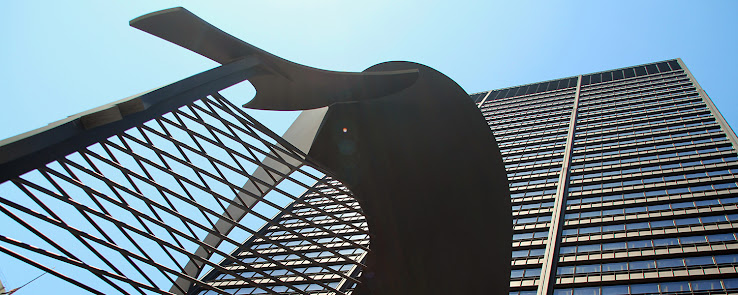Thursday, February 9, 2012
Morbid Curiosity: The Richard Harris Collection
An Exhibition NOT to be missed..
Morbid Curiosity: The Richard Harris Collection..
January 28 – July 8, 2012
Curator: Lucas Cowan
Co-Curator: Debra Purden
Director of Exhibitions: Dr. Elizabeth Lee Kelly..
Presented by Chicago Department of Cultural Affairs and Special Events in partnership with the Chicago Office of Tourism and Culture..
The exhibition explores the ways in which artists and cultures use skulls, bones and skeletons to explore human experiences and perceptions of mortality. Our awareness of death while we are still alive gives shape and meaning to our existence. Mortality is a universal theme in all arts, found repeatedly throughout time and across many cultures. The human body in skeleton form is a rich source of inspiration for contemporary artists as it was for our ancestors, from ancient civilization to the present.
As it is experienced here, the human skeleton represent more than the death. It reveals our shared identity as a species, our most profound common denominator. Signs of race, gender, status and identity melt away. Comntemporary artists use this aspect of the skeleton as an image to represent the ways in which human beings physically interact with the worlds..
The incredible team that put it all together..
Debra Purden, Lucas Cowan, Richard Harris and Dr. Elizabeth Lee Kelly..
CAUTIONARY NOTE: The exhibition contains explicit imagery that may be disturbing to younger or sensitive viewers.
Photography is prohibited in the gallery.
The exhibition is organized into two major sections,
in two seperate galleries..
Sidney R Yates Galley.. exhibits the "Kunstkammer of Death".
Kunstkammer, a German word, much used in the Renaissance period, means the cabinet of curiosities / cabinet of wonders. Kunstkammer was an early form of museum: part art gallery, part study room. In the context of this particular show, the Sidley Yates Gallery displays varied objects, sculptures, paintings, books, and artifacts, where the underlying theme is not the medium of expression, but the subject of mortality.
The Exhibit Hall.. exhibits "The War Room"..
With images and artifacts showing the horrors and reactions to war expressed through art..
Also significant is the entry passageway.. with logo-motifs on one side and mural on the other..
The Morbid Curiosity logo designed by Jason Pickleman.. click here..
Mural "Death March", by Hugo Crosthwaite... click here.
Sidney R. Yates Gallery: Kunstkammer of Death..
The traditional name for a "Cabinet of Curiosities", like this exhibition space was "Kunstkammer" - an art room where arts and treasures from all over the world were kept and studied..
Some highlights..
Kunstkammer..
The Salon Wall..
Skull Table...
Day of the Dead / Die de los Muertos ..
Portraits by Marcos Raya..
Mortality viewed by European Masters..
Mortality viewed in Eastern Tradition [yet to post]
Bone Chandelier "In the Eyes of Others", by Jodie Carey..
Sculpture "Death of Venus", by Roger Reutimann
Sculpture "Mr. and Mrs. Bones", by Cales Weintraub..
And many more sculptures, posters and paintings in the gallery, exploring the theme of mortality.
Exhibit Hall: War Room..
Or in the world of Richard Harris claims, "the Anti-War Room"..
Some highlights..
Installations by Guerra de La Paz...
Five Print Series on the Horrors of War..
Jacques Callot:"Miseries and Misfortunes of War" [1632-1633]..
Francisco Goya, "The Disasters of War" [1810-1820]..
Otto Dix, "The War" [1924]..
Chapman Brothers, "Disasters of War" [1999]..
Sandow Birk, "The Depravities of War" [2006-07]..
Richard Harris has assembled a collection that uses the human skulls and skeletons to explore several major themes. The horrors of war are played out over centuries of art, from the 17th century to the present. Vanitas painting, beginning in Baroque Period, reminds us of our mortality as we enjoy the pleasures that life has to offer. Scientific interpretations of body arising from medical illustrations were pioneered as artists and doctors began to study cadavers in the late 15th century. The Richard Harris Collection is not limited to European tradition. Arts and artifacts from Mexico, Tibet, India and Japan reveal Pre-Columbian, Hindu and Buddhist attitudes towards death and the body that contrasts with European Christian perspectives.
Many of the names in the exhibiution are famous. Rembrant van Rijn, Albercht Durer, Francisco Goya, Sandow Birk, and Laurie Lipton.. Traditional paintings are seen together with photographs, prints and drawings while sculptures and skeletons are viewed next to contemporary art installations. Unassuming objects from popular culture like posters, comic books, book plates, postcards and calenders, fiit in surprizingly well. Richard Harris has combined these works into a collection, allowing us to see an underlying unity in these artifacts and to find greater meaning than we may expect..
Photo from Opening Reception [Jan 27, 2012]
Gallery Talk with Richard Harris [Jan 29, 2012]
Gallery Talk with Richard Harris [Jan 29, 2012]
Kudos to the AWESOME TEAM..
Curator: Lucas Cowan
Co-Curator: Debra Purden
Director of Exhibitions: Dr. Elizabeth Lee Kelly..
This exhibiton is for repeated visits..
PRESS COVERAGE:
Morbid Anatomy [Article by Je]..
Sixty Inches from Center [Article by Brian Willard]..
Chicago Sun Times [Article by Kara Spak, photography Al Podgorski ]..
Chicago Tribune [Article by William Hageman]..
Live Science [Article by Wynne Parry]..
Libertyville Review [Article by Myrna Petlicki]..
Chicago Reader [Article by Sam Worley] ..












No comments:
Post a Comment